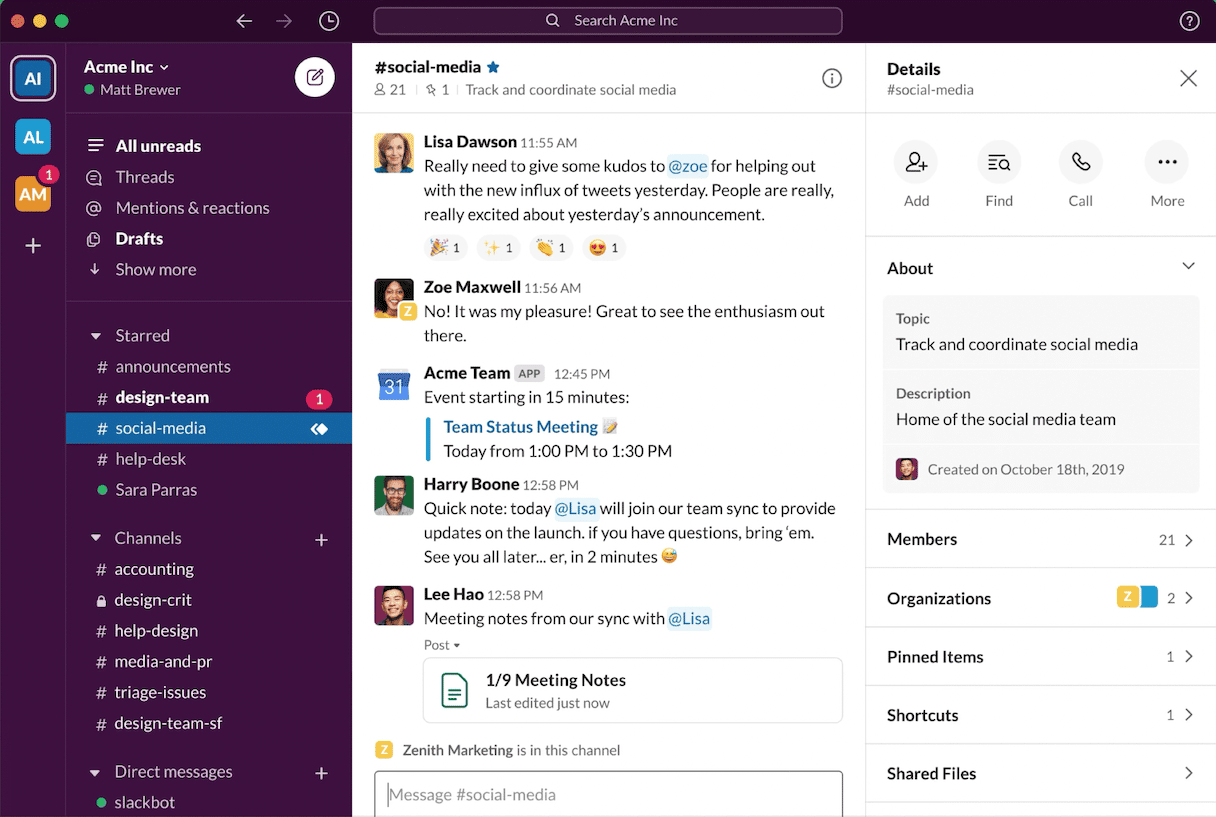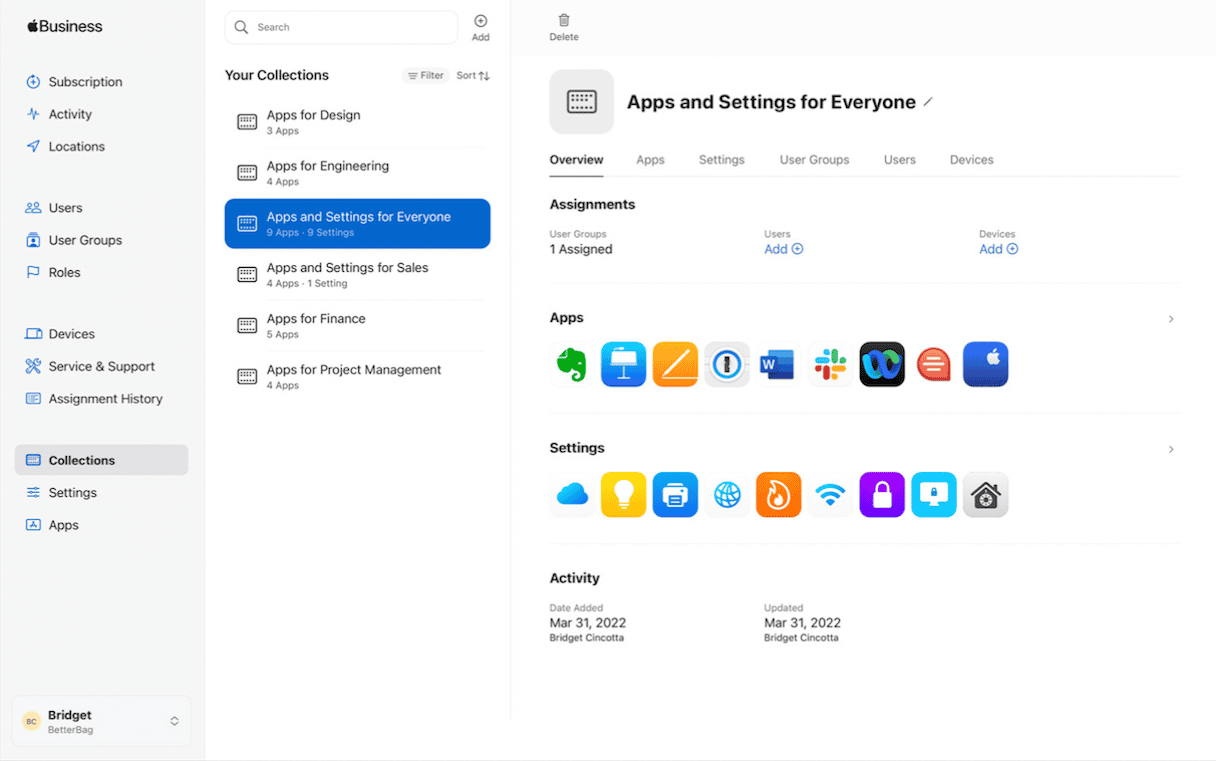Whether you love it or hate it, the reality is remote work is here to stay. Many companies have dabbled in it and dipped their toe in it. But after the entire world shut down and everybody had to work from home, even for a short period of time, businesses began to embrace the technology to work remotely. Fast forward to today, and study after study shows that not only do a majority of teams prefer to work remotely, but they also are more productive.
So, how do these teams do it? What’s the secret to their success? Well, if you find yourself asking all of these questions, then you’re in the perfect place. This article will help you figure out the best tips for managing remote teams.
10 Best practices for managing remote teams
For many enterprise managers, the shift to having a team of remote workers can feel pretty jarring, especially if you’re the type to rely on in-person meetings and team-building exercises to elevate morale and help motivate team members to take the initiative. If this is you, then you might feel like everything you know about leading a team has gone out the window. But don’t worry just yet. While there are a handful of tools that can help you manage your team remotely, there are also a ton of soft skills that will translate to this new virtual setting.
Tip 1: Make information clear and accessible
This is a bit of housekeeping upfront, but ensuring your company’s information is clear and accessible can make a world of difference for your remote team.
What does this mean? Have centralized tools and documentation that people can refer back to to learn about specific workflows or figure out where files are kept. You wouldn’t believe the number of times I’ve heard employees be surprised about a specific file server or a VPN client they didn’t know they would need to connect to internal sites.
By clearly outlining these policies, your team will know what is expected of them and feel like you’re setting them up for success.
And you might actually be doing this already for your new hires. But it’s a good idea to make sure this information is updated and take the time to re-share it with your team, so everyone can get on the same page.
Tip 2: Have a chat/meeting tool your team likes using
Your tools and apps are only good if your team knows and (mostly) enjoys using them. An application only works if your employees know how to use it and aren’t frustrated by the user experience.

When it comes to your messaging or meeting tools, you’ll want something that is easy for everyone to use. Popular solutions include Slack, Microsoft Teams, Zoom, and Google Meet. You’ll want to keep in mind the familiarity and ease of use when selecting these apps. Just because your team is already using Microsoft Office or Google suites doesn’t mean their chat clients are the best for your team.
Tip 3: Invest in managed service providers

Managing applications and pushing updates used to be a little easier when everyone was in one building. But now, more than ever, a remote management tool like JAMF or Apple Business Essentials is extremely critical. They let your IT team monitor your company-owned devices and support them wherever your employees choose to work.
Tip 4: Always think remote-first
As a manager or leader, you’re inclined to want to get everyone in a room together. But even in hybrid situations, it’s best to act and assume that people will be virtual for every event. The in-person component should be an added bonus or an afterthought really.
There’s inherent isolation or feeling of being left out and forgotten for remote employees. Doing whatever you can to mitigate this feeling and instead making sure they feel just as part of the team, even if they’re physically miles away, will be rewarding.
Tip 5: Over-communication is key
Communicating with your team is what will set them up for success. By shifting to an all-virtual workflow, sometimes over-communicating with employees is what’s needed.
Make sure your goals and expectations are clearly communicated, and team members fully grasp what those items are. Having regular touch bases and one-on-ones with each individual to get a pulse check on their workload can help both you and them feel like you’re on the same page.
Tip 6: Protect the work/life balance
Without a daily commute and working where you live, it’s easy to forget that work should stop, and you are allowed to have time to do the things you enjoy.
Encourage your teams to schedule hard-outs and keep “do not disturb” turned on until after they’ve had their morning coffee. While some employees are better about setting these boundaries, others are not. And they need a manager or leader to step in and help them look out for those lines. The flip side of that is every team has those people that don’t respect these boundaries unless they’re consistently being told they need to be mindful of them. Be the type of boss that is reminding everyone it’s okay to turn off, unplug, and disconnect from work.
Depending on how widespread your team is, it’s also important to be considerate of the time zones your employees are working from. Setting working hours is a great baseline for people to establish how to most effectively work with everyone else in your company. But from there, allow them to flex as needed, so they can continue living normal lives outside of work.
Tip 7: Keep your camera on
This tip is one that requires a bit of nuance. By going virtual and telecommuting, often the tone and familiarity we have with our coworkers are missing. There’s also nonverbal and body language that struggles to translate over video chats. But that’s why having a default camera-on policy can be helpful. It forces situations where people can laugh or nod silently while others are talking. And it also helps the speaker see that you’re engaged with what’s being said.
However, camera fatigue is a very real thing. And you don’t have to be in 6 hours of meetings to experience it. Have a bit of grace if one of your team members tells you they’re having a camera-off kind of day or connection issues. It’s okay for an employee to participate in meetings as a disembodied voice, but if everyone in your company is making an effort to be seen on camera, it will feel like a more inviting and collaborative space for all of your employees.
Tip 8: Be available and promote small talk
The hardest thing for most managers to adjust to in the remote setting is that it now requires you to be intentional with your interactions. It’s no longer enough to just tell an employee, “my door is always open.” You’ve got to show it to your team. Periodically message them and ask for their thoughts on projects and meetings. Show them that you’re not a shadowy figure who is too busy to be bothered.
Another best practice is to save time for small talk in your group meetings. Whether it’s at the beginning or the end, set aside five minutes to talk about a cool product announcement or even what everyone has been watching lately. This will help improve team morale and make communication easier and less awkward throughout the week.
Tip 9: Regularly give feedback
At this point, you’re probably noticing a theme of communication in this list. But it’s something that can make all the difference in your company culture and amongst your team.
Don’t just wait for those end-of-the-year reviews to tell employees how they’re doing. Make it something that happens early and often – bad and good. That’s the real key here. Telling your team when they’re doing things right will help reinforce behavior.
Again, in remote environments, you miss out on nonverbal cues. So, if someone you manage sends you a report that you absolutely love, they don’t get to see your smile or hear you praising it as you read through it. If you jump straight into ways they can improve the report and critique all of the weak points, that’s all they will hear.
Tip 10: Flexibility and trust
One of the biggest perks of remote work is its flexibility. People aren’t required to drive into an office and sit at a desk, uninterrupted by personal matters, for 8+ hours every day. As a manager, you need to let them be flexible with their work so that it can accommodate every aspect of their lives. If one of their kids runs in during a meeting, take the initiative to reassure them that that’s okay. Or if it takes a little bit longer for them to respond because they scheduled a doctor’s appointment in the middle of the day, there’s no need to hound them about where they are.
Managers know the best tool for any team is empowering and trusting them to successfully do their jobs. And if being offline for an hour in the afternoon to do yoga gives them the mental capacity to get all of their work done — then yay! It’s a win-win situation for everyone. Unless, of course, you consider a miserable employee zoning out at their computer screen for eight hours to be a win for your company.
Remote work is something every company is going to have to deal with. It’s more of a matter of how often and with how many employees. Even if your business isn’t entertaining a hybrid model, employees will need to work remotely either after hours or while they travel. Having a system in place and knowing how to best manage remote teams will improve morale and boost productivity.







